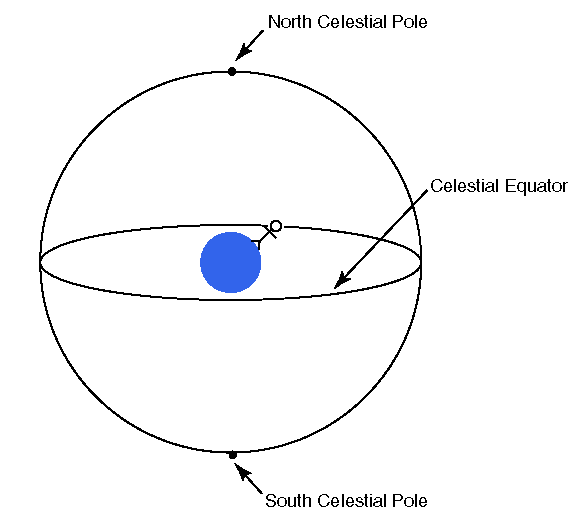Term: celestial equator
The celestial sphere is something like the globe. It has
poles that it rotates about, so it might as well have an equator
that divides the celestial sphere exactly in half: the half nearest
to the north celestial pole, and the half nearest the south celestial
pole. Just as we locate cities on the globe with latitude and
longitude, we'll soon introduce similar coordinates to locate stars
on the celestial sphere. The celestial equator always stretches
from the East point on the horizon to the West point, and hence must
cross the meridian (which runs North to South). Here at CSB/SJU
the celestial equator crosses the meridian about 45° South of
zenith.

If we wanted, we could orient the globe
so that Minnesota was "on top" and up from the globe corresponded
to up here, but most commonly globes are oriented so the north pole
is up. Similarly it often makes more sense to orient the celestial
sphere so the north celestial pole is up; but then the stick figure
standing straight up in Minnesota (the blue ball is Earth), seems to be tilted. Note that
the celestial poles are extensions of the Earth's poles, and the
celestial equator can be found by expanding out the Earth's equator.

NEXT


